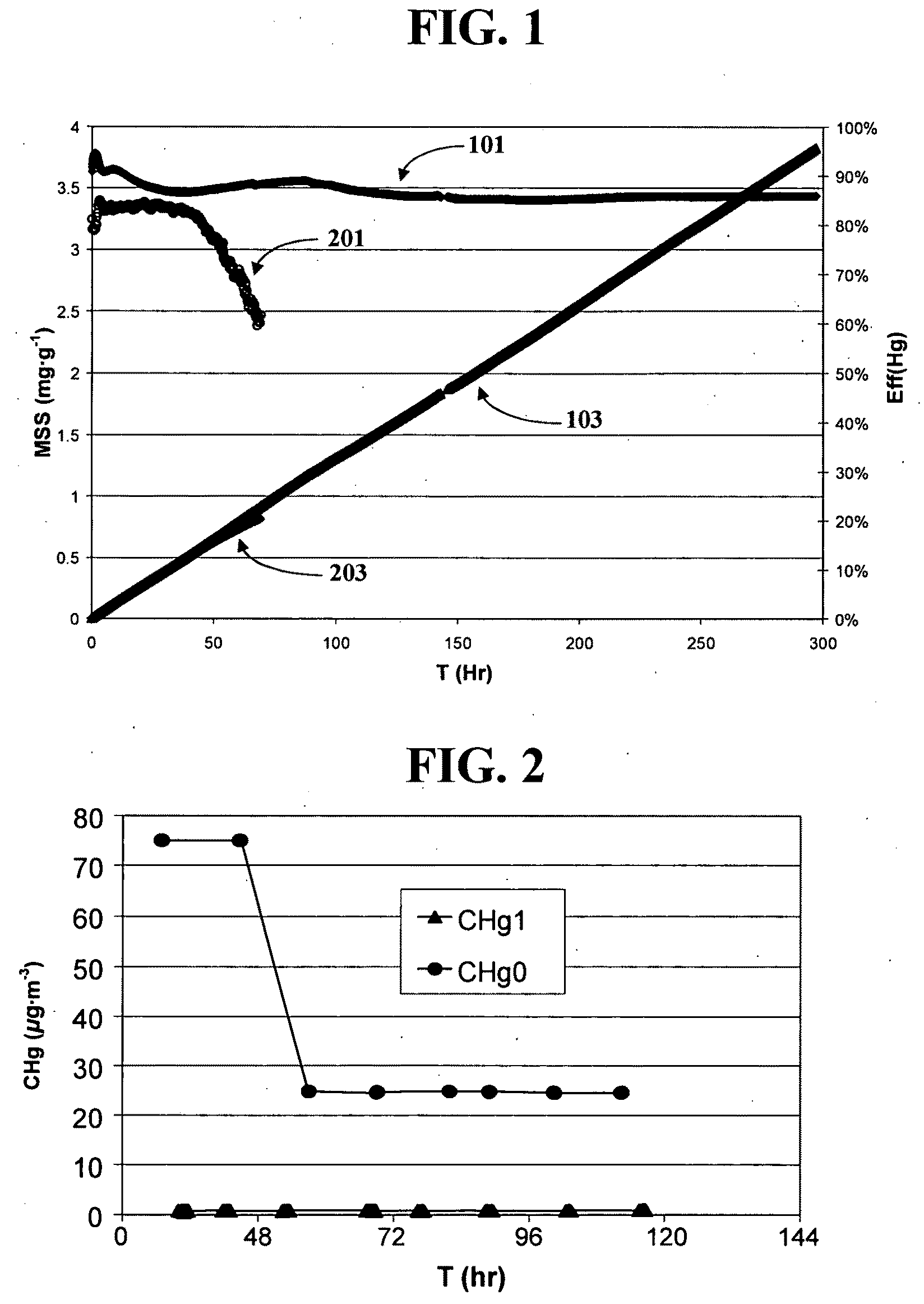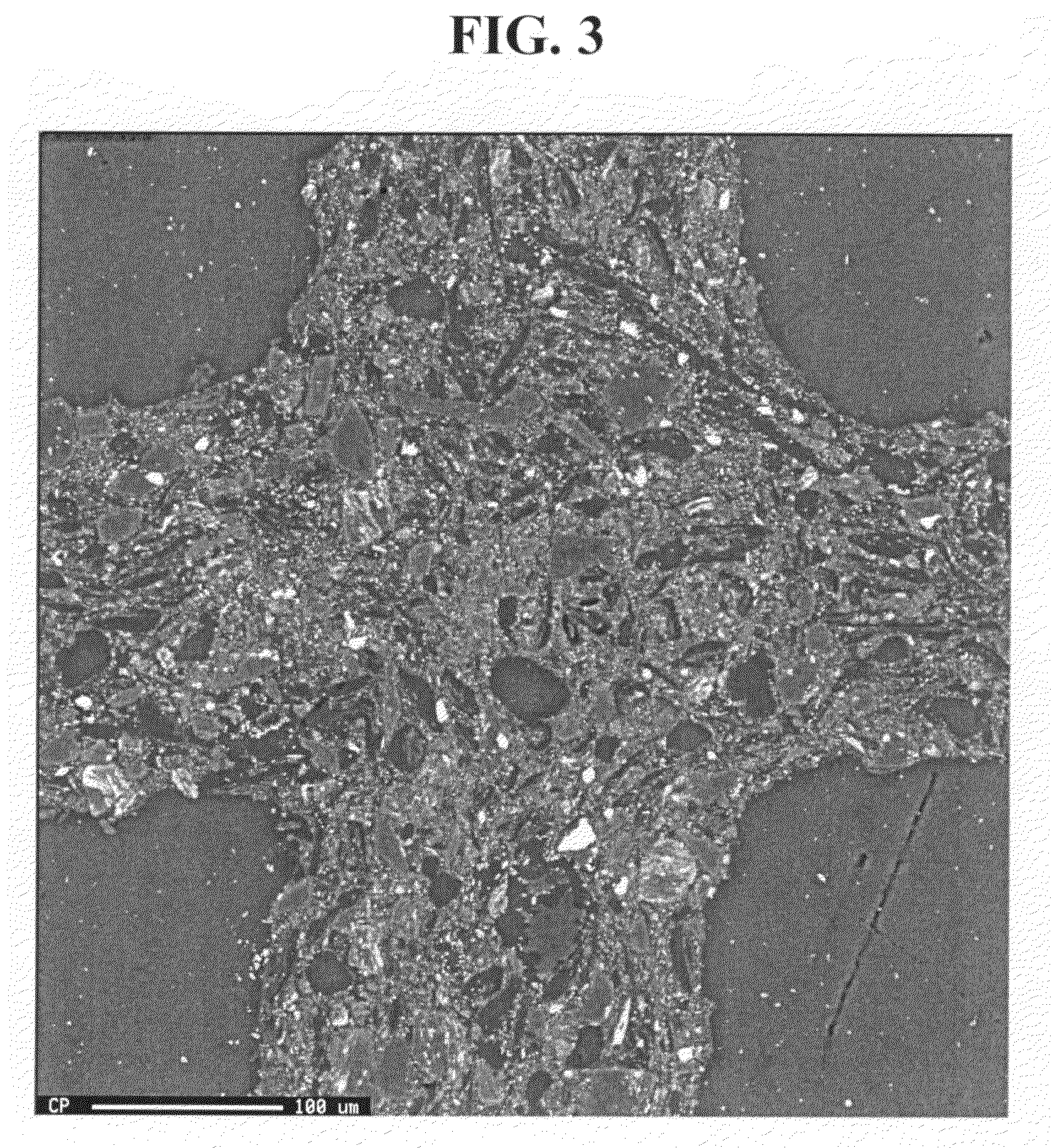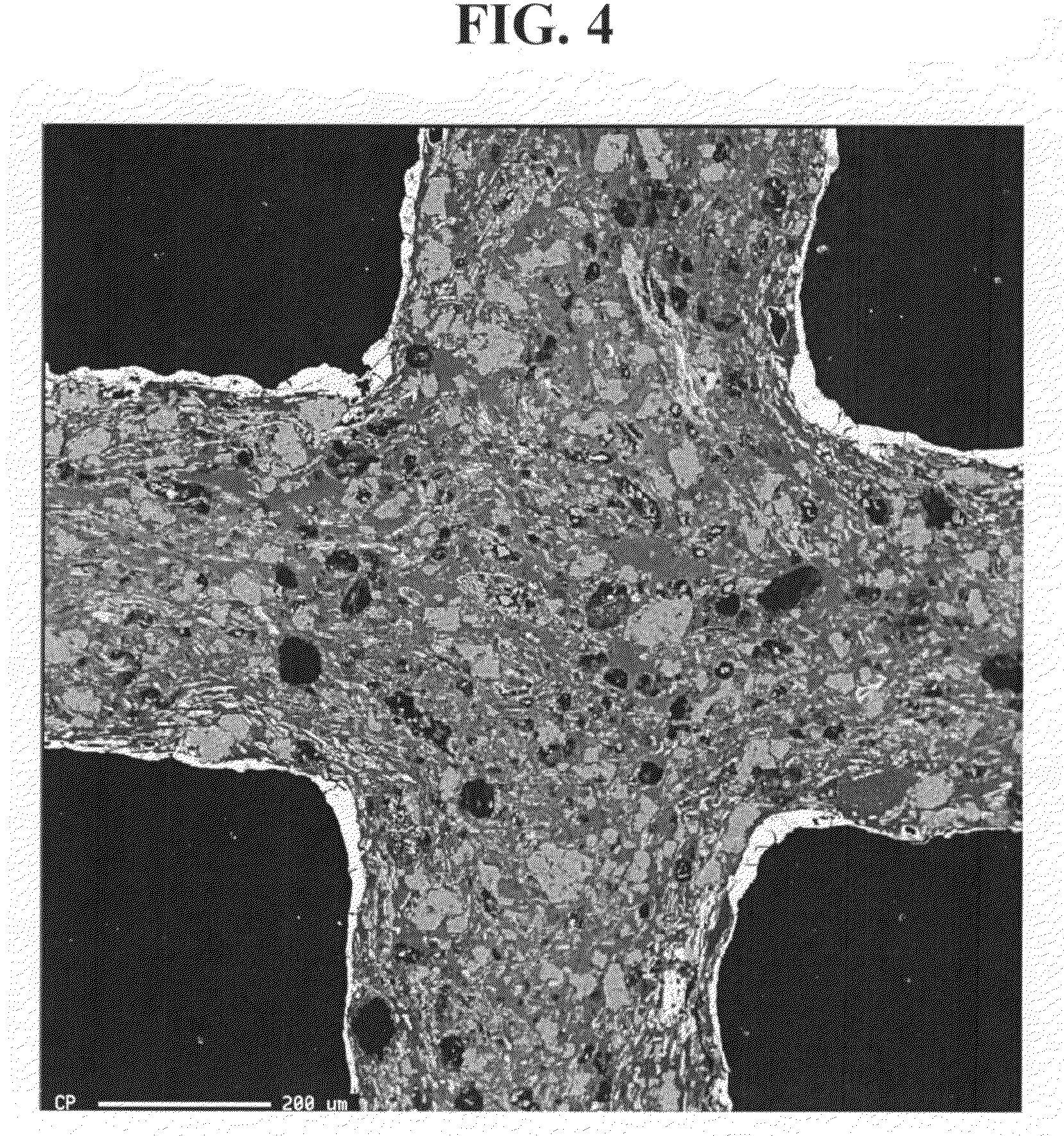Sorbent comprising activated carbon, process for making same and use thereof
a technology of activated carbon and sorbent material, which is applied in the field of sorbent material comprising activated carbon, can solve the problems of high cost of sorbent material, no effective mercury emission control technology available at a reasonable cost, and variety of health problems, so as to promote the sorption of toxic elements and effectively reduce the amount of toxic elements
- Summary
- Abstract
- Description
- Claims
- Application Information
AI Technical Summary
Benefits of technology
Problems solved by technology
Method used
Image
Examples
example 1
[0184]An extrusion composition was formulated with 46% liquid phenolic resole resin, 1% lubricating oil, 13% cordierite powder, 9% sulfur powder, 7% iron acetylacetonate, 18% cellulose fiber, 5% Methocel binder and 1% sodium stearate. This mixture was compounded and then extruded. The extruded honeycomb was then dried and cured in air at 150° C. followed by carbonization in nitrogen and activation in carbon dioxide. The activated carbon honeycomb samples were then tested for the mercury removal capability. The test was done at 160° C. with 22 μg·m−3 inlet elemental mercury concentration. The carrier gas for mercury contained N2, SO2, O2 and CO2. The gas flow rate was 750 ml / minute. The total mercury removal efficiency was 86% while elemental mercury removal efficiency was 100%.
example 2
[0185]Another extrusion composition was extruded similar to Example 1 but with 12% cordierite powder instead of 13% and the iron acetylacetonate at 4% and potassium iodide at 4% instead of 7% iron acetylacetonate. After activation these samples showed 90% total mercury removal and 100% elemental mercury removal. The presence of KI in the composition thus increased the efficiency.
example 3
[0186]In this experiment the extrusion composition was 59% phenolic resole, 1% phosphoric acid, 1% oil, 9% sulfur powder, 3% iron oxide, 19% cellulose fiber, 7% methocel binder and 1% sodium stearate. These samples were extruded, cured carbonized, activated and tested as in Example 1 for mercury removal performance. The mercury removal efficiency was 87% and 97% for total and elemental mercury, respectively.
PUM
| Property | Measurement | Unit |
|---|---|---|
| size | aaaaa | aaaaa |
| area | aaaaa | aaaaa |
| XPS | aaaaa | aaaaa |
Abstract
Description
Claims
Application Information
 Login to View More
Login to View More - R&D
- Intellectual Property
- Life Sciences
- Materials
- Tech Scout
- Unparalleled Data Quality
- Higher Quality Content
- 60% Fewer Hallucinations
Browse by: Latest US Patents, China's latest patents, Technical Efficacy Thesaurus, Application Domain, Technology Topic, Popular Technical Reports.
© 2025 PatSnap. All rights reserved.Legal|Privacy policy|Modern Slavery Act Transparency Statement|Sitemap|About US| Contact US: help@patsnap.com



